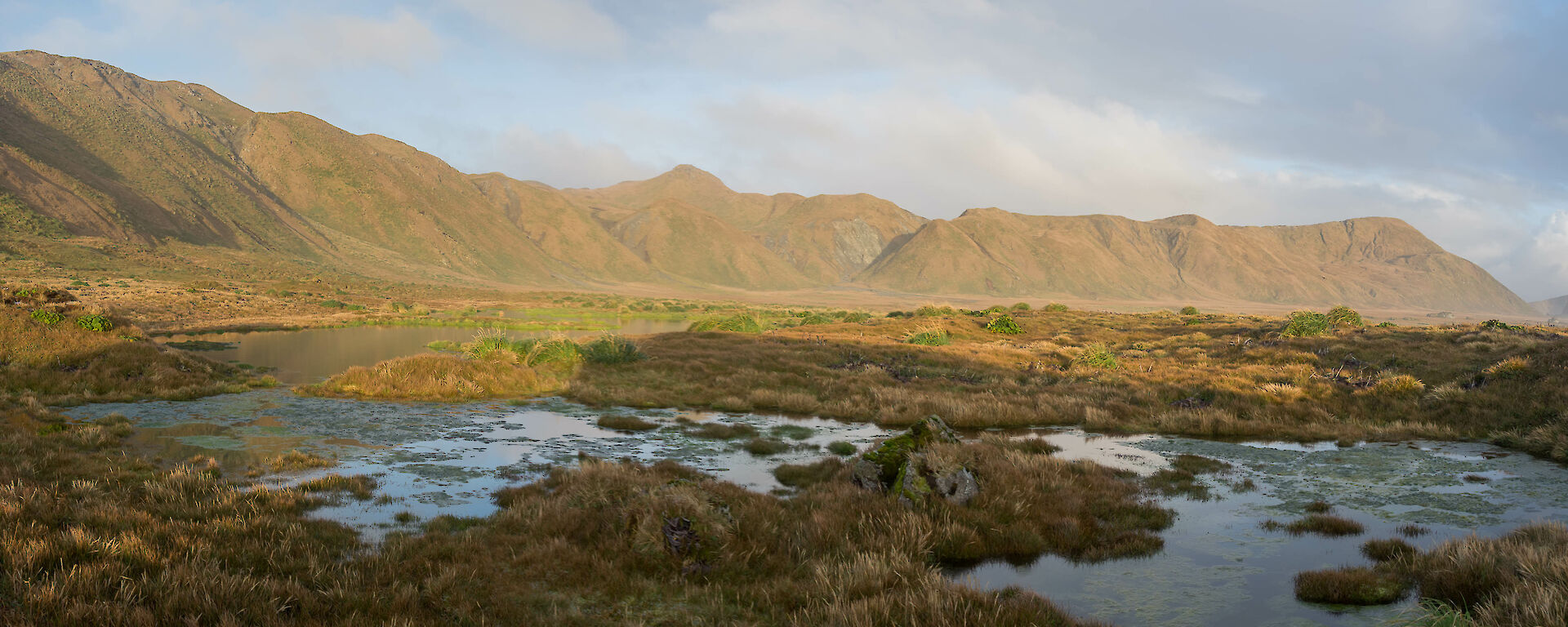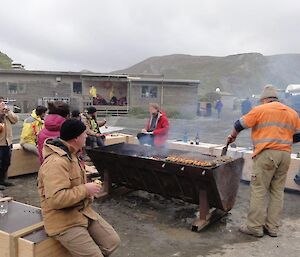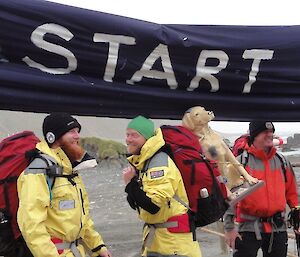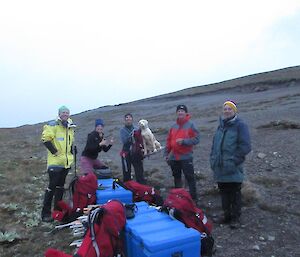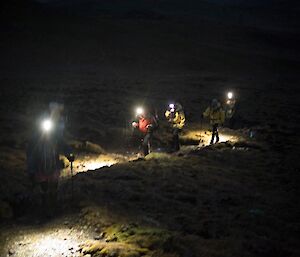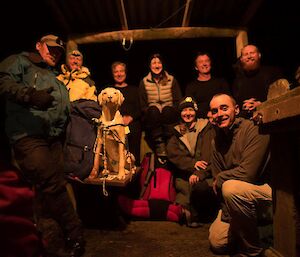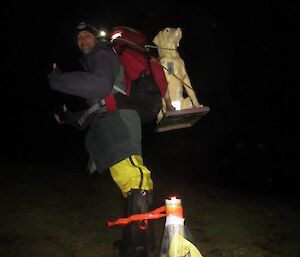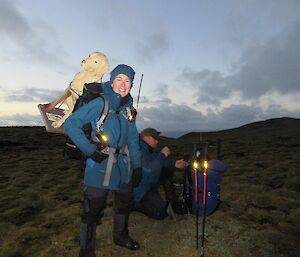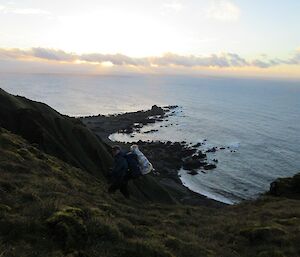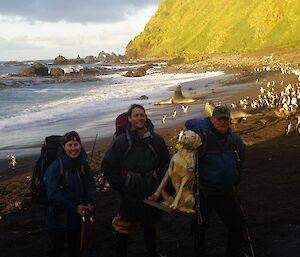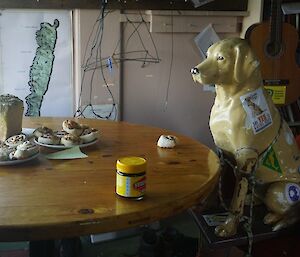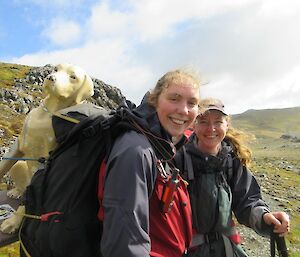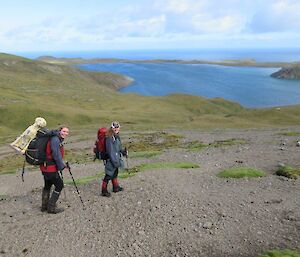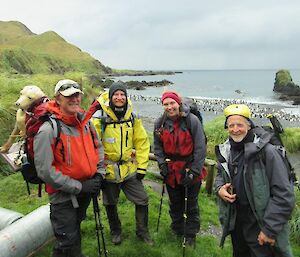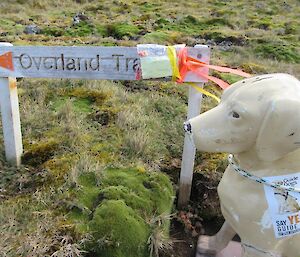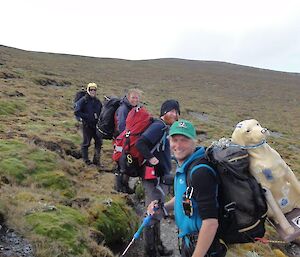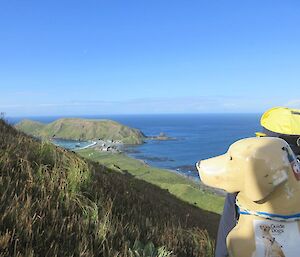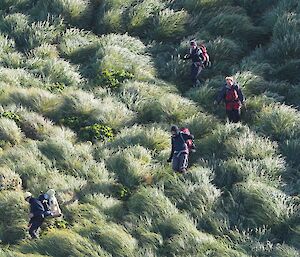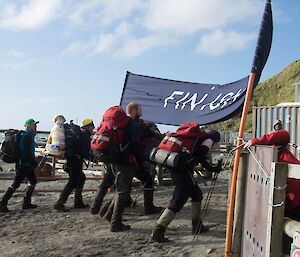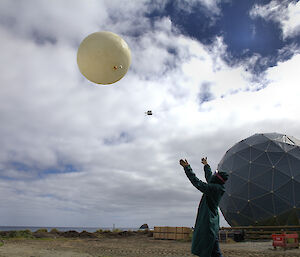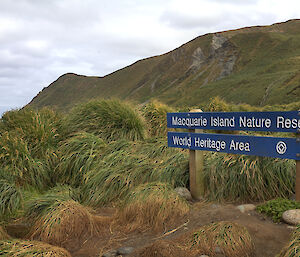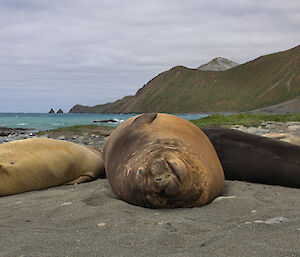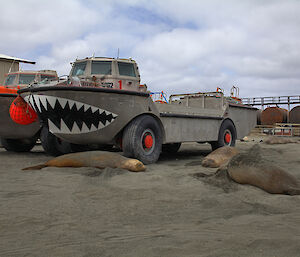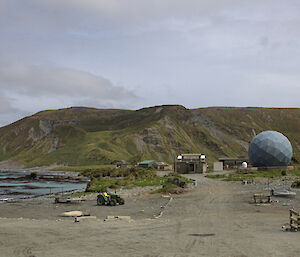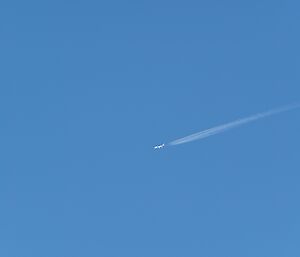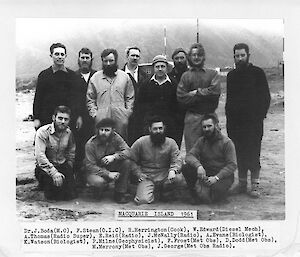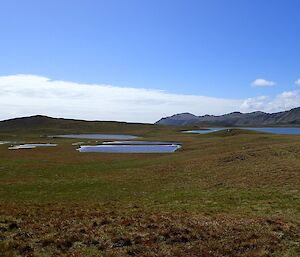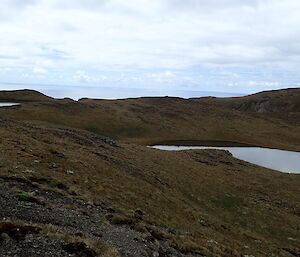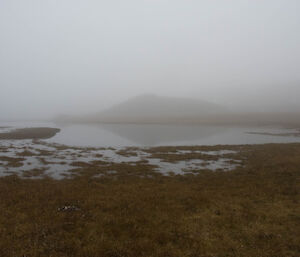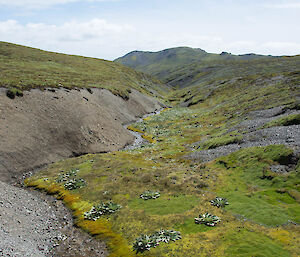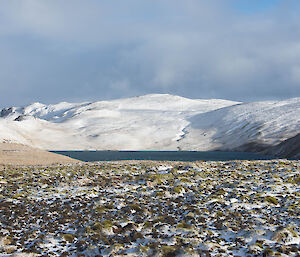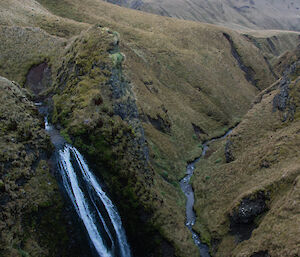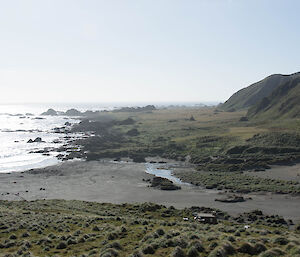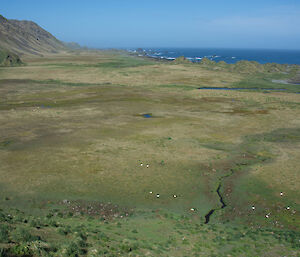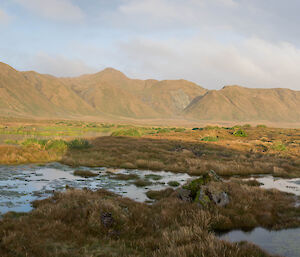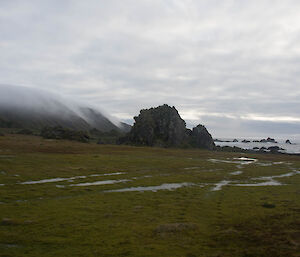As mentioned last week, as part of the inter–station 10 kilometre challenge, Macquarie Islanders decided to take Stay Here for a walk down to Hurd Point and back in 24 hours. As this is a 75 kilometre round trip, it was done with teams of walkers with each group taking Stay a bit further along the track. (Stay travelled with her own camera and some notepaper so anything in quotation marks is from the notes she came back with.)
The first team, Alex, Greg M and Greg C left station at 6 p.m. after having been farewelled by those staying behind (we need to maintain a fire team on station at all times) with a BBQ dinner. They arrived at ‘four ways’ (where all four tracks meet) to meet the next team, Joe, Kim & George just after sunset.
'George and I lead the way as daylight faded for the day, from Brothers Track to Red River Kim did deliver and from thereon in rain Greg M for me was the man! Arriving to Green Gorge Tarn, the driver-reviver was a great surprise, and Ali and Chris welcomed all with tea and flags — divine. Good luck Stay, they will be cheering along the way.'
Green Gorge Hut is the only hut actually on the Overland Track and at approximately halfway down the island, made a perfect place for a tea stop and team changeover when they arrived at 10.40 p.m. Chris and Ali were waiting with the kettle on and after more photo opportunities, set off with Alex and Stay for the next leg.
At Ratsak Junction at the unusual walking hour of 2.50 a.m., Ro and Kane joined the hike (after having to get up at 1.30 a.m. to hike out from Waterfall Bay Hut) and Ali and Alex peeled off to the hut to get some sleep. Daylight started to appear around 4.00 a.m. and the team were on the grassy down to Hurd Point just after 5.00 a.m.
'Team Stay of Ro, Kane and Chris appeared at the top of the grassy bright and early at 5 a.m. Smiles all round. I had a short hut break with a cuppa, pumpkin bread and Vegemite and cheese scrolls before heading right back up the grassy. John took the first stretch, taking me up on the plateau and over Windy Ridge. I enjoyed an early morning wake-up shower, then beautiful sunshine. Penny took the next leg, carrying me onto Ratsak Junction where Ali was met with perfect timing.
On past Major Lake, where despite Ali’s presence there was a view! Heading down to Green Gorge both Ali and John took another Stay carrying shift. Kim was met heading south along the track and provided energy biscuits. Arrived in Green Gorge in good time where the two Gregs had the kettle freshly boiled. Now onto the next legs!'
The two Gregs hit the track with John, Penny and Stay, and at four ways, Marcus and Cath joined the group for the final leg to the isthmus. They were all met at the lookout by Helen, Laura, Nat and Murray with more people gathered at the finish line. The finish line was crossed at 5.30 p.m. so return journey Macquarie Island station–Hurds Point–Macquarie Island station was completed within 24 hours!
As well as doing something that hasn’t been done here before (and yes, many would ask, ‘why would you?'), we have raised $2696.50 for Guide Dogs Tasmania so far, which adds to the feelgood factor for all.

